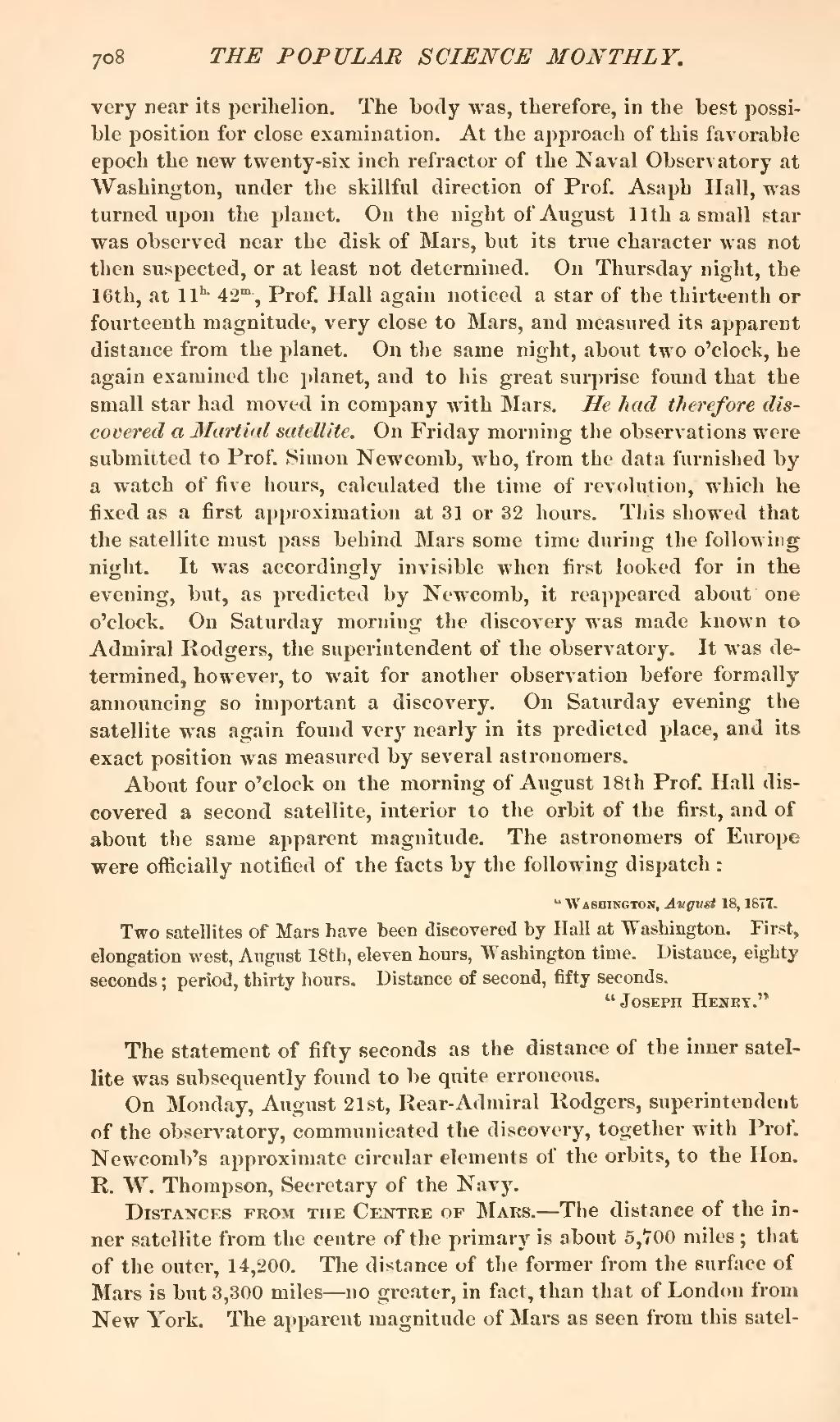very near its perihelion. The body was, therefore, in the best possible position for close examination. At the approach of this favorable epoch the new twenty-six inch refractor of the Naval Observatory at Washington, under the skillful direction of Prof. Asaph Hall, was turned upon the planet. On the night of August 11th a small star was observed near the disk of Mars, but its true character was not then suspected, or at least not determined. On Thursday night, the 16th, at 11h 42s, Prof. Hall again noticed a star of the thirteenth or fourteenth magnitude, very close to Mars, and measured its apparent distance from the planet. On the same night, about two o'clock, he again examined the planet, and to his great surprise found that the small star had moved in company with Mars. He had therefore discovered a Martial satellite. On Friday morning the observations were submitted to Prof. Simon Newcomb, who, from the data furnished by a watch of five hours, calculated the time of revolution, which he fixed as a first approximation at 31 or 32 hours. This showed that the satellite must pass behind Mars some time during the following night. It was accordingly invisible when first looked for in the evening, but, as predicted by Newcomb, it reappeared about one o'clock. On Saturday morning the discovery was made known to Admiral Rodgers, the superintendent of the observatory. It was determined, however, to wait for another observation before formally announcing so important a discovery. On Saturday evening the satellite was again found very nearly in its predicted place, and its exact position was measured by several astronomers.
About four o'clock on the morning of August 18th Prof. Hall discovered a second satellite, interior to the orbit of the first, and of about the same apparent magnitude. The astronomers of Europe were officially notified of the facts by the following dispatch:
Washington, August 18, 1877.
Two satellites of Mars have been discovered by Hall at Washington. First, elongation west, August 18th, eleven hours, Washington time. Distance, eighty seconds; period, thirty hours. Distance of second, fifty seconds.
"Joseph Henry."
The statement of fifty seconds as the distance of the inner satellite was subsequently found to be quite erroneous.
On Monday, August 21st, Rear-Admiral Rodgers, superintendent of the observatory, communicated the discovery, together with Prof. Newcomb's approximate circular elements of the orbits, to the Hon. R. W. Thompson, Secretary of the Navy.
Distances from the Centre of Mars.—The distance of the inner satellite from the centre of the primary is about 5,700 miles; that of the outer, 14,200. The distance of the former from the surface of Mars is but 3,300 miles—no greater, in fact, than that of London from New York. The apparent magnitude of Mars as seen from this satel-
